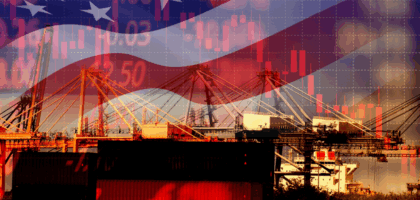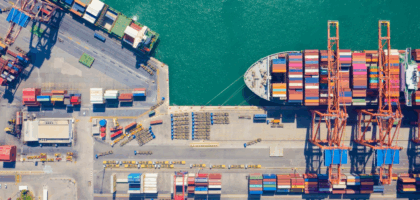Have you grown tired of the countless issues revolving around the ocean shipping industry? You’re not alone.
We’d like to say things are getting better and there’s calmer waters ahead, but then we’d be fibbing. So, we’re going to be upfront with you about the consistent problems this part of the freight industry has been facing since the beginning of the pandemic.
Skyrocketing Import Volumes Have Caused Trade Imbalances
Record import numbers and volumes across America’s largest container ports can be partly attributed to the strong retail sales the U.S. has seen since COVID restrictions have been relaxed. And as the demand remains historically high, containerized imports could pull back temporarily due to the trans-Pacific shipping system, which is essentially at its max-capacity ceiling and can no longer bear the full load.
In addition to the congestion U.S. ports are facing—where some have dozens of ships anchored off the coast, like at the Port of Los Angeles and Long Beach—many warehouses and shipping yards are struggling to keep up. The Port of LA is currently monitoring the imbalanced ratio of loaded imports to exports, which has reached 4:1—the highest levels ever recorded (think about that for a moment, as the Port of Los Angeles has been in operation since 1907). And they’re not the only ports affected. Many on both coasts are facing the challenges of the major influx of import volumes. Ocean carriers have started to re-route more vessels to alternative U.S. ports, including Oakland, Seattle-Tacoma, Savannah, and Charleston, to avoid the most affected port locations.
Continued Imbalances Drive Up Prices
As of the end of May, all major trade corridors have seen rate growth during the first five months of 2021 and new records continue to be set. Between 2016 and 2020, container rates, while fluctuating, never exceeded $3,000 according to Drewry Shipping Consultant’s data. Their composite though exceeded $5,000 for the first time in 2021, and one of the hardest hit routes—China to Rotterdam—exceeded $10,000 for a standard 40-foot container, up 485% year-over-year.
According to market intelligence firm Xeneta, little relief will be seen in the months ahead. The global benchmark for container rates has risen by 34.5% since the beginning of 2021 with Far East exports and European imports leading the way—both up by over 50% this year.
The “China” Factor
Upon new research, there is something called the “China factor” that needs to be considered in the scheme of the current ocean shipping challenges. During the first quarter of 2020, Chinese manufacturing activity declined rapidly due to the pandemic. Many containership sailings were cancelled due to the lack of product being exported from China due to factory closures. This negatively impacted the global supply chain, as manufacturing operations in the U.S., Japan, and Korea heavily depend on Chinese-made materials.
In the fourth quarter of 2020, Chinese manufacturing capacity reached its highest level in five years. However, a backlog of orders remains. Manufacturing capacity utilization in the United States still hasn’t regained its pre-pandemic level due to the difficulties of attracting workers and continuous shortages of imported components. This is why U.S. retailers are struggling to meet the high demand and rebuild their inventories.
Few Alternatives to Ocean Freight
Unfortunately, an unbalanced global recovery from the COVID-19 pandemic has caused trouble for the overarching logistics and transportation industry. From manufacturing backlog to port congestion to employment issues, avoiding surging transport costs is next to impossible.
Alternative modes of transportation would typically be an option—whether it be air or train—but even those avenues have seen heavily increasing rates in 2021. Some importers have resorted to very expensive airfreight, including major companies like Peloton, who spent $110 million on moving their Taiwan-sourced product via air into the U.S. over the past year. Others have shifted to shipping into East Coast ports to avoid the congestion on the West Coast.
The challenges surrounding ocean container shipping will continue for the foreseeable future. Many shippers are under the impression that additional charges on their ocean freight guarantees the availability of containers—this is far from the truth. Working closely with your logistics partner is key during this volatile and uncertain time. ICAT Logistics is here to answer all your questions and help you get your products where they need to be. Our transparent and consistent communication will give you peace of mind and keep you updated on your freight.
Resources:
- Retail Sales Continues to Drive Import Volumes at Major U.S. Ports (Maritime Executive)
- Causes of Port Congestion & Tactics to Improve Efficiency (FreightWaves)
- Five Reasons Global Shipping Costs Will Continue to Rise (ING Think)
- Container Rates Continue to Set New Highs in 2021 (Maritime Executive)
- Ocean Cargo: Post-Pandemic Strategies Take Hold (SCMR)



